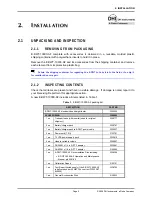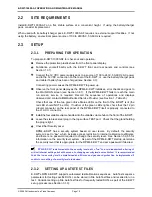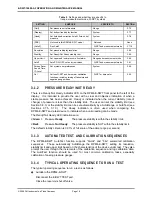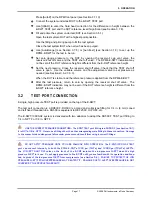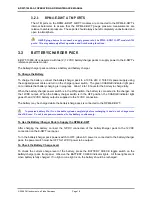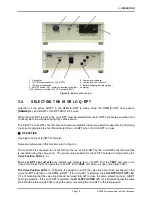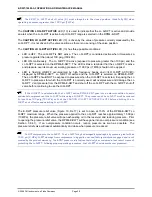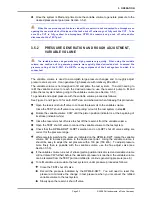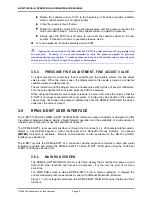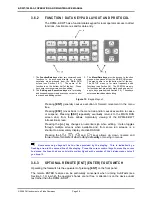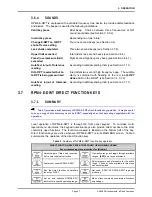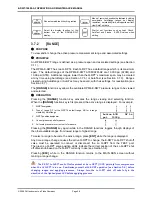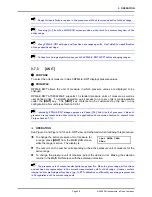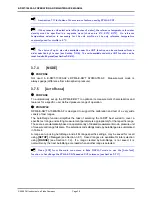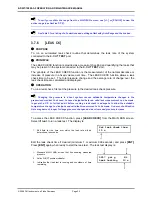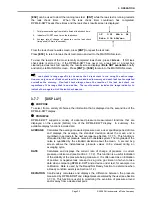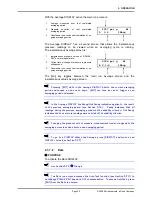
3. OPERATION
Page 23
© 2008 DH Instruments, a Fluke Company
Once the system is filled and primed, use the variable volume to generate pressure to the
desired pressure set point (see Section 3.5.2).
When the reservoir cap vent valve is closed, the reservoir is not connected to atmosphere so
opening the reservoir shut off valve and the test shut off valve may not fully vent the DUT. To be
sure the DUT is fully vented to atmosphere, OPEN the reservoir cap shut off valve and/or
disconnect at the TEST port.
3.5.2
PRESSURE GENERATION AND ROUGH ADJUSTMENT,
VARIABLE VOLUME
The variable volume can generate very high pressure very quickly. When using the variable
volume, use caution not to generate pressure more quickly than desired and not to exceed the
pressure rating of the E-DWT, it’s Q-RPTs or any component of the test system to which it is
connected.
The variable volume is used to accomplish large pressure changes and to roughly adjust
pressure at a set point. It can generate high pressure with relatively little effort.
The variable volume is not designed to fill and prime the test system. To avoid needing to
refill the variable volume to reach the desired pressure, use the reservoir pump to fill and
prime the test system before going to the variable volume (see Section 3.5.1).
To generate and adjust pressure with the variable volume proceed as follows:
See Figure 9 and Figure 10 for an E-DWT view and schematic when following this procedure.
Open the reservoir shut off valve to connect the reservoir to the variable volume.
Close the TEST shut off valve to avoid ‘pulling’ oil out of the test system in step .
Rotate the variable volume CCW until the piston position indicator is at the beginning of
its stroke (indicator white).
Close the reservoir shut off valve to shut off the reservoir from the variable volume.
Open the TEST shut off valve to connect the variable volume to the test system.
Check that the RPM4-E-DWT Q-RPT selection and Lo Q-RPT shut off valve setting are
correct for the pressure range.
While carefully watching the pressure indicated on the RPM4-E-DWT, rotate the variable
volume CW to increase pressure to the desired set point. Using the variable volume, it
should be easy to adjust the set pressure within 100 psi (700 kPa). To adjust pressure
more finely than is possible with the variable volume, use the fine adjust valve (see
Section 3.5.3).
If the variable volume runs out of stroke (piston position indicator red and variable volume
will not rotate CW further) before the desired set pressure is reached, the variable volume
can be isolated from the TEST port and refilled to continue generating pressure (see 8.).
To refill variable volume while the test system is under pressure proceed as follows:
Close the TEST shut off valve.
Record the pressure indicated by the RPM4-E-DWT. You will need to reset this
pressure to minimize the change in test pressure when you reconnect the refilled
variable volume to the test system
Slowly open the reservoir shut off valve.

